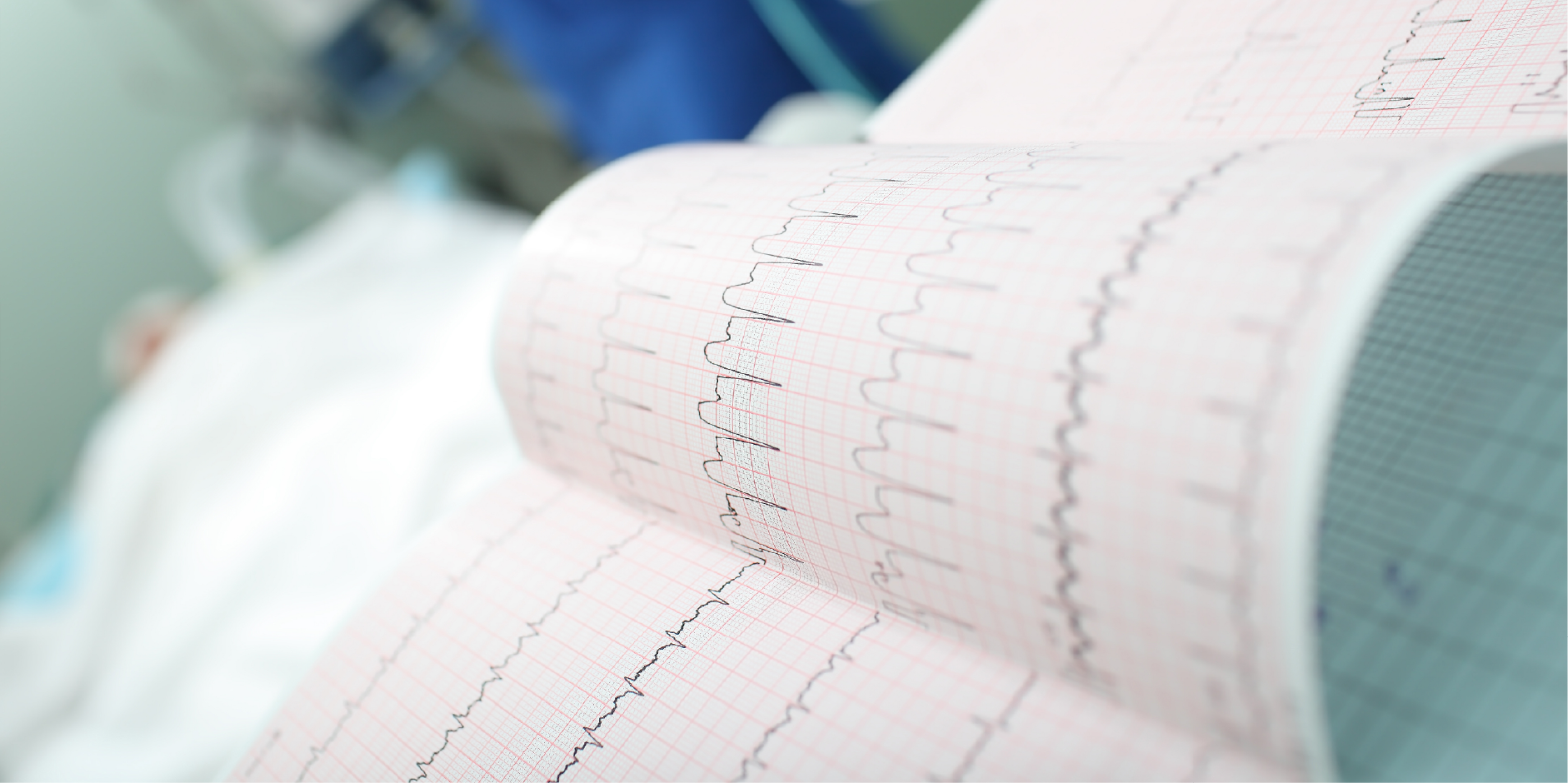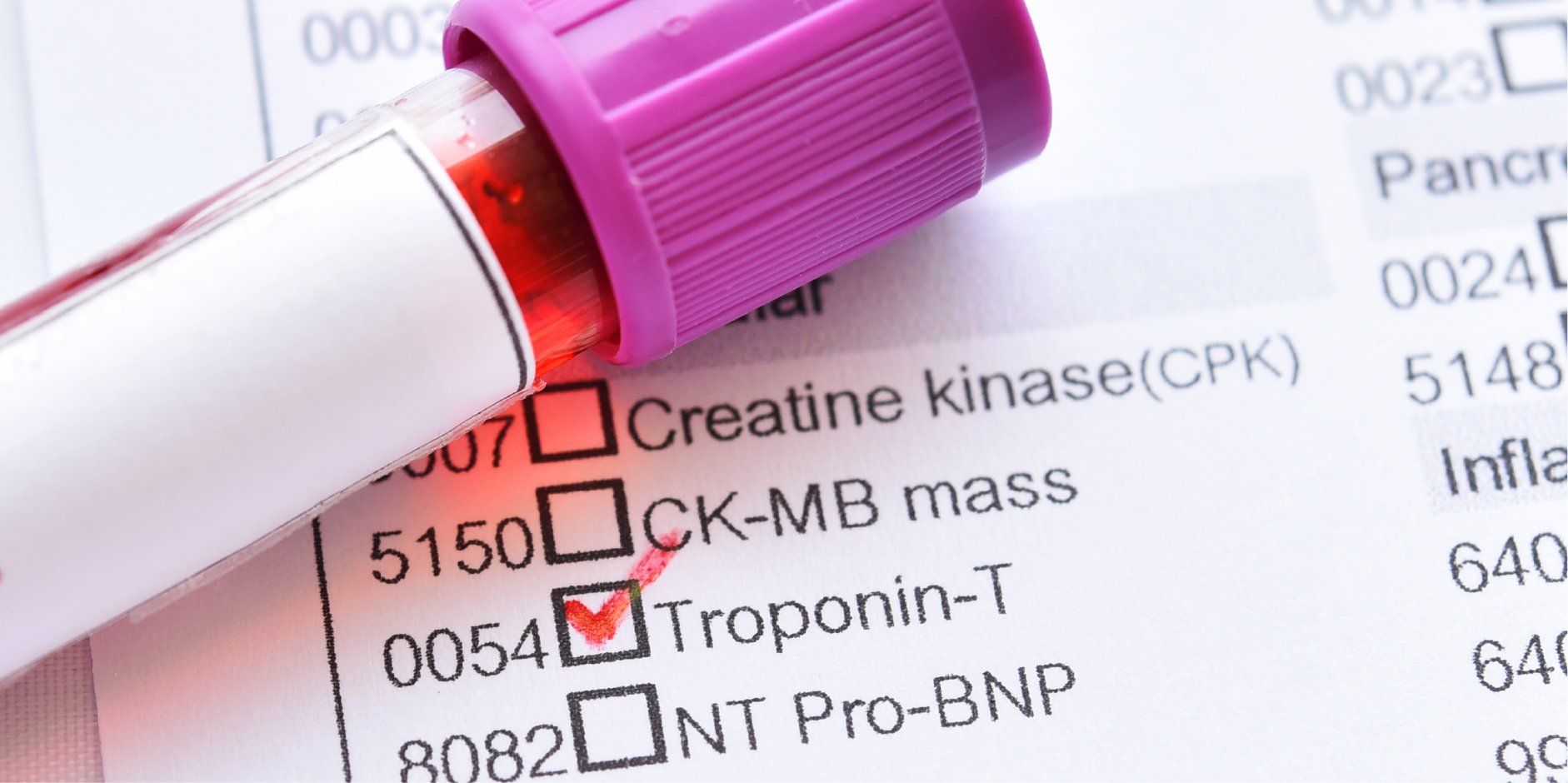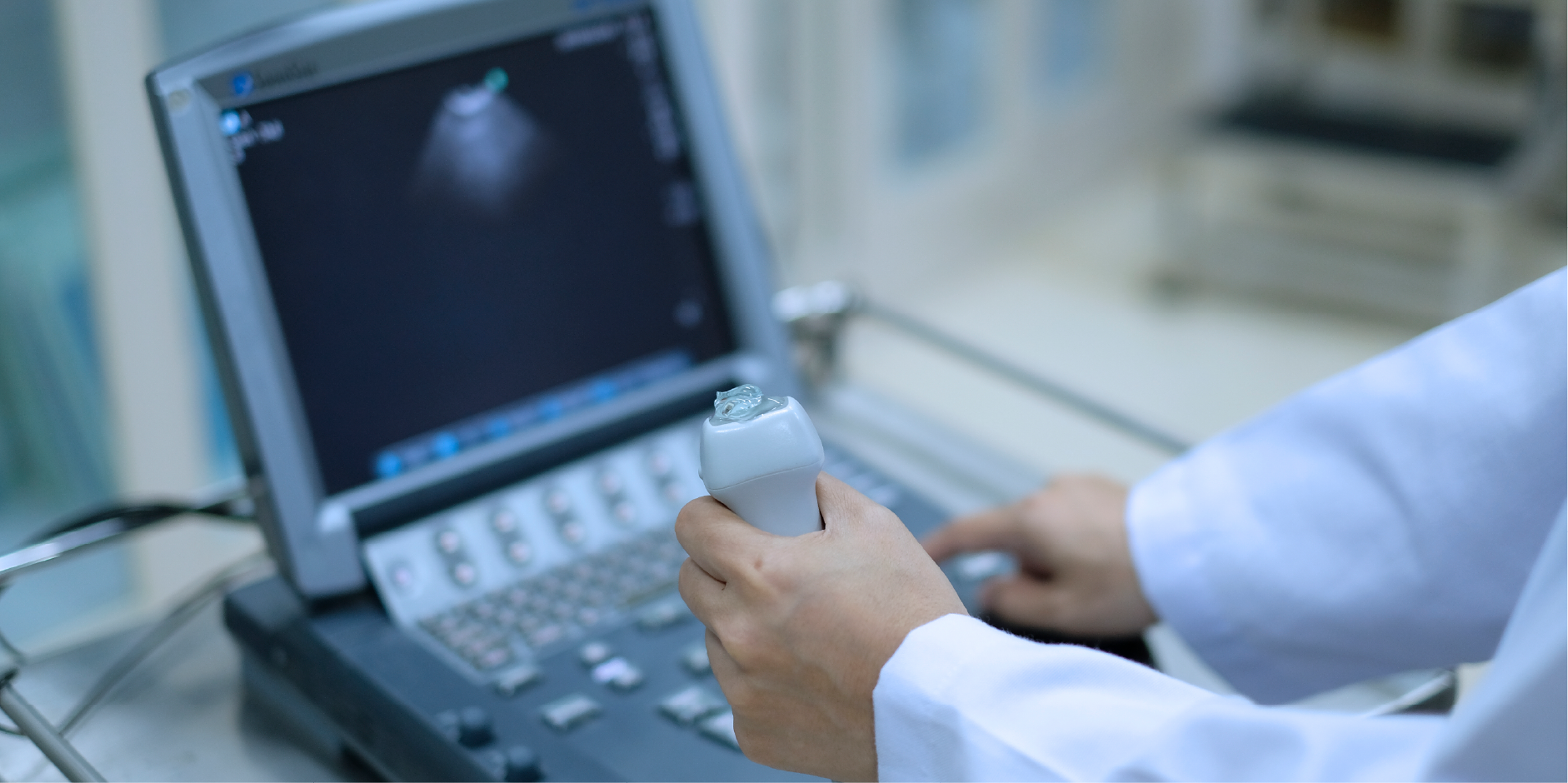Content:
Xét nghiệm và Hỗ trợ chẩn đoán
Nội dung của trang này:
Xét nghiệm và Hỗ trợ chẩn đoán
Hình ảnh học
Nội dung của trang này:
Xét nghiệm và Hỗ trợ chẩn đoán
Hình ảnh học
Xét nghiệm và Hỗ trợ chẩn đoán
ECG
Trên bệnh nhân đang bị đau ngực, cần phải thực hiện ECG ngay lập tức (trong vòng 10 phút sau khi nhập viện) và càng sớm càng tốt ở những bệnh nhân đã hết triệu chứng tại thời điểm đánh giá.
ECG giữ vai trò quan trọng trong việc đánh giá bệnh nhân nghi ngờ bị ACS. ECG được thực hiện trong cơn đau thắt ngực đặc biệt có giá trị. Cần lưu ý rằng ECG nên được lặp lại (cách nhau 15-30 phút trong 1 giờ đầu tiên) nếu cần hoặc nếu có nghi ngờ khả năng cao bị ACS. Điều quan trọng là chuỗi ECG có thể xác định đoạn ST chênh lên là chỉ dấu của STEMI, cần đảm bảo tái thông ngay lập tức. Hơn nữa, chuỗi ECG cũng phát hiện những thay đổi thiếu máu cục bộ đang tiến triển trong trường hợp ECG ban đầu không chẩn đoán được.
So sánh với ECG trước đó nếu có, là quan trọng, đặc biệt là ở bệnh nhân có bệnh lý tim đi kèm (như phì đại thất trái hoặc MI trước đó). Theo dõi liên tục đoạn ST ở nhiều chuyển đạo là một phương án thay thế cho chuỗi ECG 12 chuyển đạo có thể chấp nhận được trên bệnh nhân có nghi ngờ cao trên lâm sàng về ACS nhưng có ECG ban đầu không chẩn đoán được.
 Acute Coronary Syndromes w.out Persistent ST-Segment Elevation_Diagnostics 1
Acute Coronary Syndromes w.out Persistent ST-Segment Elevation_Diagnostics 1
Đau thắt ngực không ổn định hoặc NSTEMI
Trên ECG, UA hoặc NSTEMI có thể cho thấy đoạn ST chênh xuống (đặc biệt là dạng đi ngang hoặc dốc xuống) >0,1 mV trong ≥2 chuyển đạo liên tiếp. Phát hiện này gợi ý rất nhiều đến ACS. Cũng có thể có sóng T đảo ngược >0,1 mV trong ≥2 chuyển đạo liên tiếp với sóng R chiếm ưu thế, nhưng điều này ít đặc hiệu hơn đối với ACS. Ngoài ra, cũng có thể có sóng T đảo ngược rõ rệt >0,2 mV ở chuyển đạo trước tim hoặc tỷ lệ R/S >1 hoặc đoạn ST chênh lên thoáng qua.
Các biểu hiện ECG khác
Các biểu hiện ECG khác bao gồm đoạn ST chênh lên kéo dài hoặc block nhánh trái mới hoặc được cho là mới có độ đặc hiệu cao đối với STEMI đang tiến triển. Trong trường hợp đó, bệnh nhân nên được đánh giá ngay lập tức để điều trị tái tưới máu.
Vui lòng xem biểu đồ quản lý bệnh Nhồi máu cơ tim có ST chênh lên để biết thêm thông tin.
Cần lưu ý rằng ECG hoàn toàn bình thường không loại trừ khả năng bị ACS. Nếu ECG bình thường trong cơn đau ngực, nên nghi ngờ chẩn đoán khác.
Chỉ dấu sinh hóa để phát hiện hoại tử cơ tim
Các chỉ dấu sinh hóa giữ vai trò là xét nghiệm bổ sung trong chẩn đoán, phân tầng nguy cơ và quản lý bệnh nhân nghi ngờ bị ACS.
Men tim troponin T hoặc I (định lượng)
Xét nghiệm hs-cTn I là chỉ định bắt buộc cho bệnh nhân có triệu chứng nghi ngờ hoặc có khả năng bị ACS và có kết quả ECG bình thường hoặc không chẩn đoán được. cTn nên được đo ngay sau khi có triệu chứng và kết quả có trong vòng 60 phút sau khi lấy mẫu máu. MI được xác định nếu cTn tăng và/hoặc giảm đáng kể với ít nhất 1 giá trị lớn hơn giới hạn tham chiếu trên (URL) tại bách phân vị thứ 99 cùng với các tiêu chí lâm sàng khác. Đối với các giá trị nhỏ hơn bách phân vị thứ 99, sử dụng các lưu đồ để loại trừ ACS bao gồm lưu đồ HEART (tiền sử, ECG, tuổi, yếu tố nguy cơ, troponin), lưu đồ 1 giờ và 2 giờ của Hiệp hội Tim mạch Châu Âu (ESC). Lưu đồ 3 giờ của ESC là một phương án thay thế nếu không có lưu đồ 1 giờ hoặc 2 giờ của ESC. Cần lưu ý rằng các mức ngưỡng của các hs-cTn khác nhau là đặc hiệu tùy theo loại xét nghiệm và cũng có các ngưỡng đặc hiệu theo giới tính.
cTn T và I là các chỉ dấu được lựa chọn hơn cho tình trạng tổn thương và hoại tử cơ tim do có độ nhạy và độ đặc hiệu cao. Có thể được phát hiện trong máu sau 6 giờ bằng xét nghiệm thông thường (sớm hơn với xét nghiệm hs-cTn) và nồng độ có thể vẫn ở mức cao lên đến 14 ngày. Troponin xác định chính xác tình trạng hoại tử cơ tim nhưng nên được sử dụng kết hợp với các tiêu chuẩn khác của MI bao gồm các triệu chứng thiếu máu cục bộ và/hoặc các phát hiện trên ECG và chẩn đoán hình ảnh.
 Acute Coronary Syndromes w.out Persistent ST-Segment Elevation_Diagnostics 2
Acute Coronary Syndromes w.out Persistent ST-Segment Elevation_Diagnostics 2
Myoglobin và/hoặc creatinine kinase – myocardial band (CK-MB)
CK-MB có thể được đo ở những bệnh nhân mới có triệu chứng (<6 giờ) như một chỉ dấu sớm của MI và ở những bệnh nhân bị thiếu máu cục bộ tái phát sau nhồi máu gần đây (<2 tuần) để phát hiện nhồi máu mới.
Các dấu ấn sinh học khác
Các dấu ấn sinh học khác bao gồm protein liên kết myosin C và copeptin, đóng vai trò thay thế cho cTn và CK-MB.
Các xét nghiệm chẩn đoán khác theo chỉ định
Các xét nghiệm chẩn đoán khác có thể thực hiện bao gồm công thức máu toàn phần (CBC), điện giải, creatinine, urê máu (BUN), độ lọc cầu thận ước tính (eGFR), protein phản ứng C (CRP), glucose máu, peptide natri lợi niệu typ B0 (BNP), N-terminal pro-BNP, chỉ số lipid máu, chức năng tuyến giáp và các xét nghiệm đông máu. Các xét nghiệm này có thể phát hiện tình trạng thiếu máu, nhiễm độc giáp, DM và bệnh động mạch vành. Hơn nữa, các xét nghiệm bổ sung có thể xác định tình trạng nhiễm trùng. Một số nghiên cứu đã chỉ ra rằng nguy cơ mắc ACS tăng lên trong vòng 1-2 tuần sau khi nhiễm trùng đường hô hấp cấp. Việc không bị nhiễm trùng có thể mang tính tiên lượng. Sau cùng, nên cân nhắc xác định D-dimer thay vì các kỹ thuật chẩn đoán hình ảnh để loại trừ thuyên tắc phổi.
Trên bệnh nhân đang bị đau ngực, cần phải thực hiện ECG ngay lập tức (trong vòng 10 phút sau khi nhập viện) và càng sớm càng tốt ở những bệnh nhân đã hết triệu chứng tại thời điểm đánh giá.
ECG giữ vai trò quan trọng trong việc đánh giá bệnh nhân nghi ngờ bị ACS. ECG được thực hiện trong cơn đau thắt ngực đặc biệt có giá trị. Cần lưu ý rằng ECG nên được lặp lại (cách nhau 15-30 phút trong 1 giờ đầu tiên) nếu cần hoặc nếu có nghi ngờ khả năng cao bị ACS. Điều quan trọng là chuỗi ECG có thể xác định đoạn ST chênh lên là chỉ dấu của STEMI, cần đảm bảo tái thông ngay lập tức. Hơn nữa, chuỗi ECG cũng phát hiện những thay đổi thiếu máu cục bộ đang tiến triển trong trường hợp ECG ban đầu không chẩn đoán được.
So sánh với ECG trước đó nếu có, là quan trọng, đặc biệt là ở bệnh nhân có bệnh lý tim đi kèm (như phì đại thất trái hoặc MI trước đó). Theo dõi liên tục đoạn ST ở nhiều chuyển đạo là một phương án thay thế cho chuỗi ECG 12 chuyển đạo có thể chấp nhận được trên bệnh nhân có nghi ngờ cao trên lâm sàng về ACS nhưng có ECG ban đầu không chẩn đoán được.
 Acute Coronary Syndromes w.out Persistent ST-Segment Elevation_Diagnostics 1
Acute Coronary Syndromes w.out Persistent ST-Segment Elevation_Diagnostics 1Đau thắt ngực không ổn định hoặc NSTEMI
Trên ECG, UA hoặc NSTEMI có thể cho thấy đoạn ST chênh xuống (đặc biệt là dạng đi ngang hoặc dốc xuống) >0,1 mV trong ≥2 chuyển đạo liên tiếp. Phát hiện này gợi ý rất nhiều đến ACS. Cũng có thể có sóng T đảo ngược >0,1 mV trong ≥2 chuyển đạo liên tiếp với sóng R chiếm ưu thế, nhưng điều này ít đặc hiệu hơn đối với ACS. Ngoài ra, cũng có thể có sóng T đảo ngược rõ rệt >0,2 mV ở chuyển đạo trước tim hoặc tỷ lệ R/S >1 hoặc đoạn ST chênh lên thoáng qua.
Các biểu hiện ECG khác
Các biểu hiện ECG khác bao gồm đoạn ST chênh lên kéo dài hoặc block nhánh trái mới hoặc được cho là mới có độ đặc hiệu cao đối với STEMI đang tiến triển. Trong trường hợp đó, bệnh nhân nên được đánh giá ngay lập tức để điều trị tái tưới máu.
Vui lòng xem biểu đồ quản lý bệnh Nhồi máu cơ tim có ST chênh lên để biết thêm thông tin.
Cần lưu ý rằng ECG hoàn toàn bình thường không loại trừ khả năng bị ACS. Nếu ECG bình thường trong cơn đau ngực, nên nghi ngờ chẩn đoán khác.
Chỉ dấu sinh hóa để phát hiện hoại tử cơ tim
Các chỉ dấu sinh hóa giữ vai trò là xét nghiệm bổ sung trong chẩn đoán, phân tầng nguy cơ và quản lý bệnh nhân nghi ngờ bị ACS.
Men tim troponin T hoặc I (định lượng)
Xét nghiệm hs-cTn I là chỉ định bắt buộc cho bệnh nhân có triệu chứng nghi ngờ hoặc có khả năng bị ACS và có kết quả ECG bình thường hoặc không chẩn đoán được. cTn nên được đo ngay sau khi có triệu chứng và kết quả có trong vòng 60 phút sau khi lấy mẫu máu. MI được xác định nếu cTn tăng và/hoặc giảm đáng kể với ít nhất 1 giá trị lớn hơn giới hạn tham chiếu trên (URL) tại bách phân vị thứ 99 cùng với các tiêu chí lâm sàng khác. Đối với các giá trị nhỏ hơn bách phân vị thứ 99, sử dụng các lưu đồ để loại trừ ACS bao gồm lưu đồ HEART (tiền sử, ECG, tuổi, yếu tố nguy cơ, troponin), lưu đồ 1 giờ và 2 giờ của Hiệp hội Tim mạch Châu Âu (ESC). Lưu đồ 3 giờ của ESC là một phương án thay thế nếu không có lưu đồ 1 giờ hoặc 2 giờ của ESC. Cần lưu ý rằng các mức ngưỡng của các hs-cTn khác nhau là đặc hiệu tùy theo loại xét nghiệm và cũng có các ngưỡng đặc hiệu theo giới tính.
cTn T và I là các chỉ dấu được lựa chọn hơn cho tình trạng tổn thương và hoại tử cơ tim do có độ nhạy và độ đặc hiệu cao. Có thể được phát hiện trong máu sau 6 giờ bằng xét nghiệm thông thường (sớm hơn với xét nghiệm hs-cTn) và nồng độ có thể vẫn ở mức cao lên đến 14 ngày. Troponin xác định chính xác tình trạng hoại tử cơ tim nhưng nên được sử dụng kết hợp với các tiêu chuẩn khác của MI bao gồm các triệu chứng thiếu máu cục bộ và/hoặc các phát hiện trên ECG và chẩn đoán hình ảnh.
 Acute Coronary Syndromes w.out Persistent ST-Segment Elevation_Diagnostics 2
Acute Coronary Syndromes w.out Persistent ST-Segment Elevation_Diagnostics 2Myoglobin và/hoặc creatinine kinase – myocardial band (CK-MB)
CK-MB có thể được đo ở những bệnh nhân mới có triệu chứng (<6 giờ) như một chỉ dấu sớm của MI và ở những bệnh nhân bị thiếu máu cục bộ tái phát sau nhồi máu gần đây (<2 tuần) để phát hiện nhồi máu mới.
Các dấu ấn sinh học khác
Các dấu ấn sinh học khác bao gồm protein liên kết myosin C và copeptin, đóng vai trò thay thế cho cTn và CK-MB.
Các xét nghiệm chẩn đoán khác theo chỉ định
Các xét nghiệm chẩn đoán khác có thể thực hiện bao gồm công thức máu toàn phần (CBC), điện giải, creatinine, urê máu (BUN), độ lọc cầu thận ước tính (eGFR), protein phản ứng C (CRP), glucose máu, peptide natri lợi niệu typ B0 (BNP), N-terminal pro-BNP, chỉ số lipid máu, chức năng tuyến giáp và các xét nghiệm đông máu. Các xét nghiệm này có thể phát hiện tình trạng thiếu máu, nhiễm độc giáp, DM và bệnh động mạch vành. Hơn nữa, các xét nghiệm bổ sung có thể xác định tình trạng nhiễm trùng. Một số nghiên cứu đã chỉ ra rằng nguy cơ mắc ACS tăng lên trong vòng 1-2 tuần sau khi nhiễm trùng đường hô hấp cấp. Việc không bị nhiễm trùng có thể mang tính tiên lượng. Sau cùng, nên cân nhắc xác định D-dimer thay vì các kỹ thuật chẩn đoán hình ảnh để loại trừ thuyên tắc phổi.
Hình ảnh học
Các xét nghiệm chẩn đoán khác theo chỉ định
Có thể chụp X-quang ngực để xác định tình trạng sung huyết hoặc phù phổi và nguyên nhân gây ra các triệu chứng ở ngực. Trong khi chụp cắt lớp vi tính (CT) có thể loại trừ thuyên tắc phổi và bóc tách động mạch chủ. Chụp động mạch vành bằng CT có thể được cân nhắc thay cho chụp động mạch xâm lấn để loại trừ CAD ở những bệnh nhân có kết quả troponin hoặc ECG bình thường hoặc không rõ ràng. Siêu âm tim có thể được sử dụng để đánh giá chức năng thất trái và loại trừ các nguyên nhân tim mạch khác gây đau ngực. Siêu âm tim qua thành ngực (TTE) được khuyến nghị ở những bệnh nhân nghi ngờ ACS và bị sốc tim hoặc nghi ngờ có biến chứng cơ học. Chụp cộng hưởng từ (MRI) có thể được sử dụng để xác định khả năng sống của cơ tim và loại trừ các chẩn đoán phân biệt (như thuyên tắc phổi hoặc bóc tách động mạch chủ). Chụp cắt lớp cơ tim khi nghỉ có thể hữu ích ở bệnh nhân bị đau ngực mà không có thay đổi ECG hoặc bằng chứng về nhồi máu cơ tim đang xảy ra.
 Acute Coronary Syndromes w.out Persistent ST-Segment Elevation_Diagnostics 3
Acute Coronary Syndromes w.out Persistent ST-Segment Elevation_Diagnostics 3
Có thể chụp X-quang ngực để xác định tình trạng sung huyết hoặc phù phổi và nguyên nhân gây ra các triệu chứng ở ngực. Trong khi chụp cắt lớp vi tính (CT) có thể loại trừ thuyên tắc phổi và bóc tách động mạch chủ. Chụp động mạch vành bằng CT có thể được cân nhắc thay cho chụp động mạch xâm lấn để loại trừ CAD ở những bệnh nhân có kết quả troponin hoặc ECG bình thường hoặc không rõ ràng. Siêu âm tim có thể được sử dụng để đánh giá chức năng thất trái và loại trừ các nguyên nhân tim mạch khác gây đau ngực. Siêu âm tim qua thành ngực (TTE) được khuyến nghị ở những bệnh nhân nghi ngờ ACS và bị sốc tim hoặc nghi ngờ có biến chứng cơ học. Chụp cộng hưởng từ (MRI) có thể được sử dụng để xác định khả năng sống của cơ tim và loại trừ các chẩn đoán phân biệt (như thuyên tắc phổi hoặc bóc tách động mạch chủ). Chụp cắt lớp cơ tim khi nghỉ có thể hữu ích ở bệnh nhân bị đau ngực mà không có thay đổi ECG hoặc bằng chứng về nhồi máu cơ tim đang xảy ra.
 Acute Coronary Syndromes w.out Persistent ST-Segment Elevation_Diagnostics 3
Acute Coronary Syndromes w.out Persistent ST-Segment Elevation_Diagnostics 3